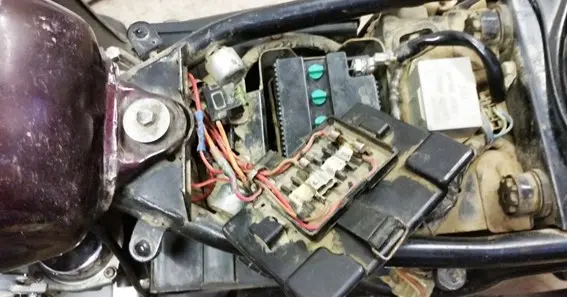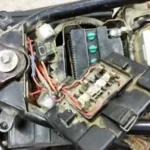A scooter’s electrical system relies on the voltage regulator to maintain a consistent voltage level, ensuring the proper functioning of various components. A malfunctioning voltage regulator can lead to several issues, including the blowing of fuses. This article delves into how a bad voltage regulator can cause blown fuses on a scooter, the symptoms to watch for, and preventive measures to maintain your scooter’s electrical health.
Understanding the Voltage Regulator’s Role
The voltage regulator controls the output from the scooter’s alternator, ensuring that the electrical system receives a stable voltage, typically around 12-14 volts. This regulation is crucial to prevent overcharging or undercharging the battery and to protect sensitive electrical components.
Also Read N: Comprehensive Guide To A-25350-S Air Filter Cross-References And Applications
How a Faulty Voltage Regulator Can Blow Fuses
When a voltage regulator fails, it may allow excessive voltage to pass through the electrical system. This overvoltage can cause:
- Overcurrent Situations: Excessive voltage can lead to increased current flow, potentially exceeding the fuse’s rated capacity and causing it to blow.
- Component Damage: Sensitive components may short-circuit under high voltage, leading to blown fuses as a protective response.
Also Read P: Navigating RedShelf Login: A Comprehensive Guide For Digital Textbook Access
Symptoms of a Bad Voltage Regulator
Identifying a faulty voltage regulator early can prevent further damage. Common symptoms include:
- Frequent Blown Fuses: Regularly replacing blown fuses may indicate an underlying voltage regulation issue.
- Dimming or Flickering Lights: Inconsistent voltage can cause headlights and dashboard lights to dim or flicker.
- Battery Issues: Overcharging can lead to a swollen battery, while undercharging results in a dead battery.
- Erratic Instrument Cluster Behavior: Malfunctioning gauges or warning lights may signal voltage irregularities.
Diagnosing the Issue
To determine if the voltage regulator is the culprit:
- Visual Inspection: Check for visible damage or corrosion on the voltage regulator and associated wiring.
- Voltage Testing: Use a multimeter to measure the voltage output from the regulator. Readings significantly above or below the standard range (12-14 volts) indicate a problem.
- Component Testing: Test other electrical components to rule out additional issues.
Preventive Measures
Maintaining your scooter’s electrical system can prevent voltage regulator failures:
- Regular Maintenance: Schedule periodic inspections to identify and address potential issues early.
- Quality Replacements: Use high-quality parts when replacing electrical components to ensure reliability.
- Proper Installation: Ensure all components are correctly installed to prevent electrical faults.
Conclusion
A bad voltage regulator can indeed cause blown fuses on a scooter by allowing excessive voltage into the electrical system. Recognizing the symptoms and conducting regular maintenance are key to preventing such issues and ensuring the longevity of your scooter’s electrical components.
FAQ
1. How can I test if my scooter’s voltage regulator is faulty?
Use a multimeter to measure the voltage output from the regulator. If the reading is significantly above or below 12-14 volts, the regulator may be faulty.
2. Can a bad voltage regulator damage other scooter components?
Yes, excessive voltage can damage sensitive electrical components, leading to further malfunctions.
3. How often should I inspect my scooter’s electrical system?
Regular inspections are recommended, especially before long rides or if you notice any electrical issues.
4. Is it safe to ride a scooter with a faulty voltage regulator?
It’s not advisable, as it can lead to further electrical failures and potential safety hazards.
5. Can I replace the voltage regulator myself?
If you have experience with scooter maintenance, you can replace it yourself. However, consulting a professional is recommended to ensure proper installation.










